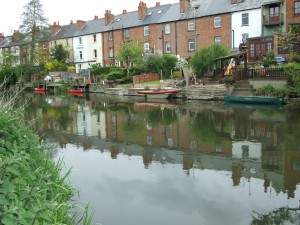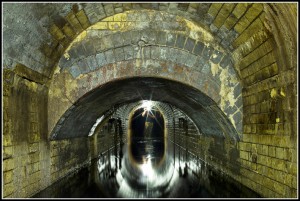Falling Down the Thames Blog 38, 03rd December 2014
The Thames and Its Myriad Tributaries
In our attempt to make sense of the world, we name things. This doesn’t always help. For instance, you could take a short walk through the English city of Canterbury following Whitstable Road, St. Dunstans Street, St. Peter’s Street, High Street, Parade, St. George Street, St. George’s Place and New Dover Road without ever turning to the left or the right, as they are all the same road.
Similarly the names we give topographic features don’t always guarantee a sense of order. As you read in last week’s guest blog by John Grigsby, if Krista and I plan to paddle the River Thames beginning in a field near the village of Kemble, we may be starting in entirely the wrong place. But that is the nature of rivers. Most of them are an amalgam of water from endless tributaries.
The River Thames is no exception. Fifty or more rivers add their water to what we traditionally think of as the Thames. Along its highest reaches, three rivers, the Churn, the Key and the Ray, all join the River Thames at Cricklade. Some tributaries have their own grand histories, but I prefer the ones with amusing names. I want to believe that the River Crane which flows fourteen kilometers from the town of Hayes to join the Thames at Isleworth was named after the bird. It wasn’t. According to the Environment Agency, the River Mole has more species of fish in it (fourteen) than any other in the nation. Emptying into the Thames near Hampton Court Palace, its name has nothing to do with moles. It is probably best not to ask about the origin of the name of the River Kennet.
On Friday April 24, Krista and I will paddle past the junction of the River Thames and the River Thame. And if that isn’t confusing enough, the fifty kilometre long River Tame is in Manchester, nowhere near the Thame or the Thames. River Tam is a character is a science fiction television series, but I digress.
Some of the River Thames tributaries are not what they might appear. The Longford River and the Duke of Northumberland’s River are both artificial; the latter was created as a source of power for mills during the reign of Henry VIII. The lower reaches of the Stream Sudbrook are wholey contained within a culvert. And those are not the only rivers feeding the Thames that have been fiddled with. Hidden from view below the streets of London are the rivers Westbourne, Tyburn, Walbrook, Peck, Neckinger, Effra and Wandle.
Next week I will tell you about London’s greatest hidden river, the Fleet, and how Krista and I will add it to our Falling Down the Thames adventure.
- Glen
Photo credits: The River Kennet – riverkennet.blogspot.com; the River Westbourne, www.thebeardedotter.com


